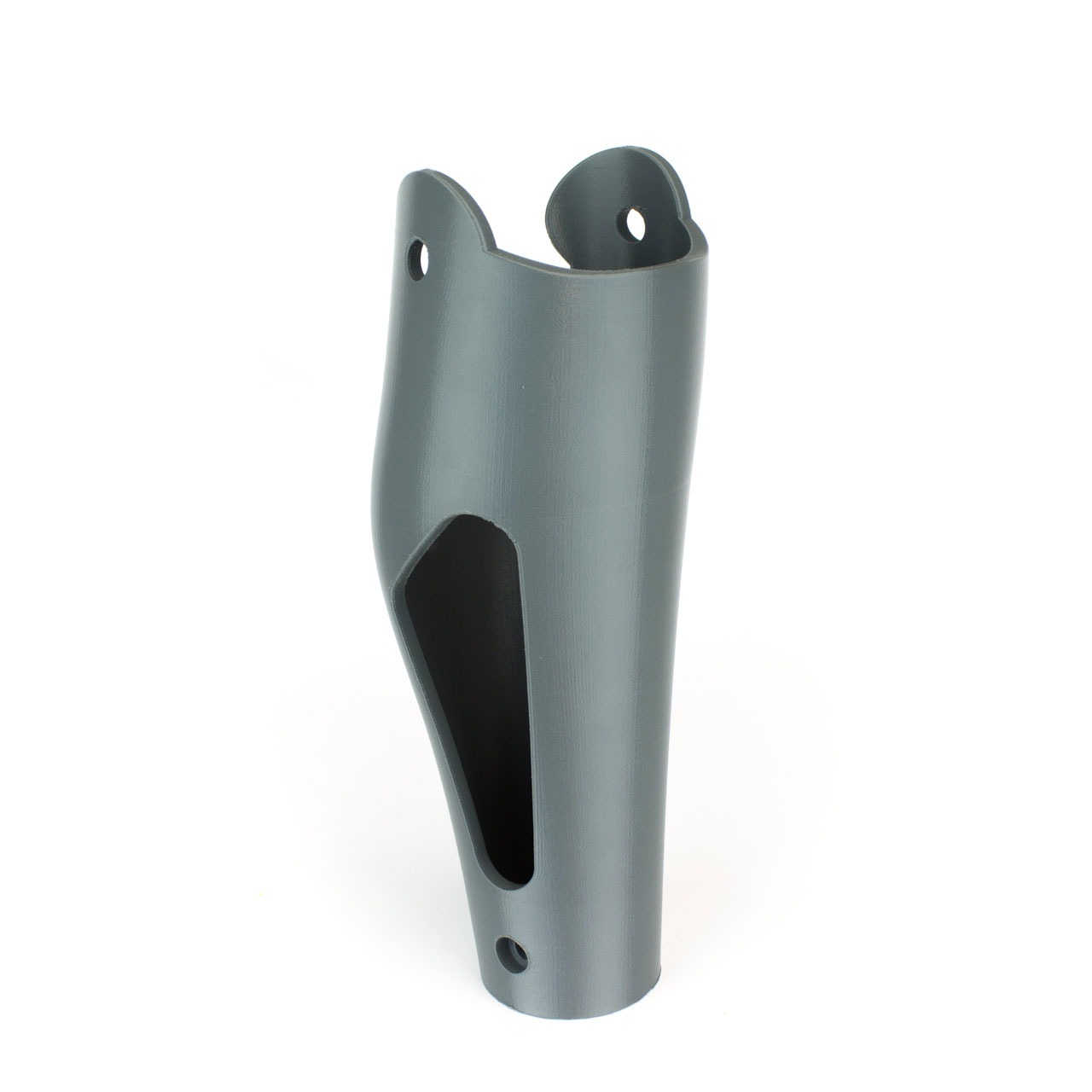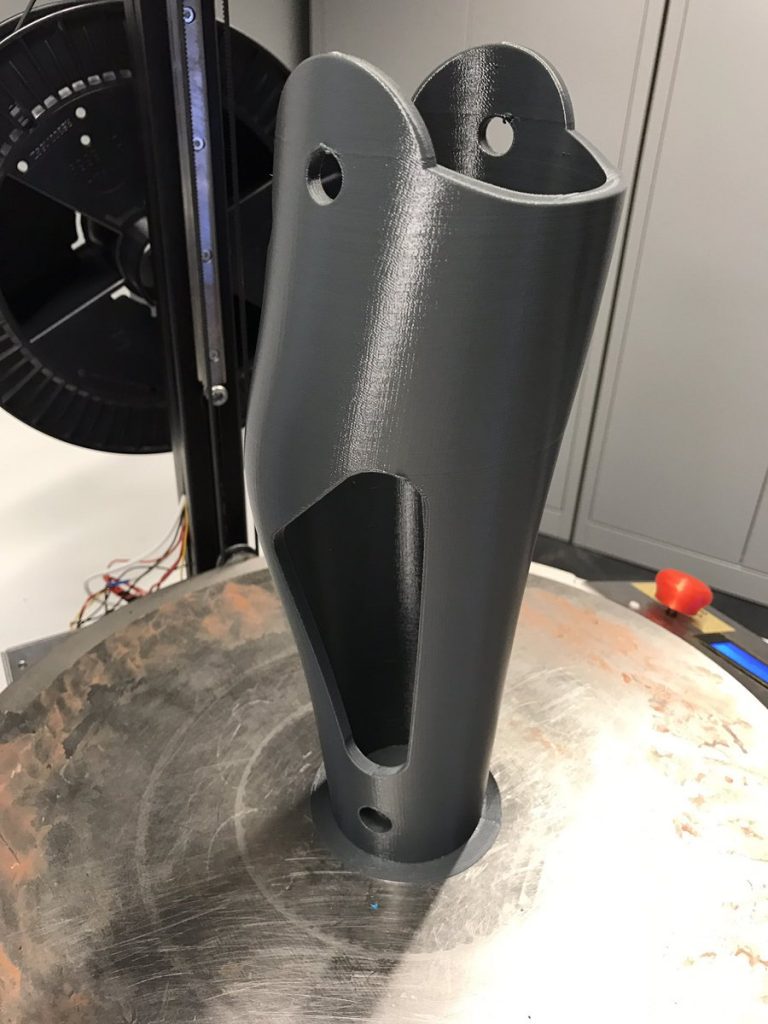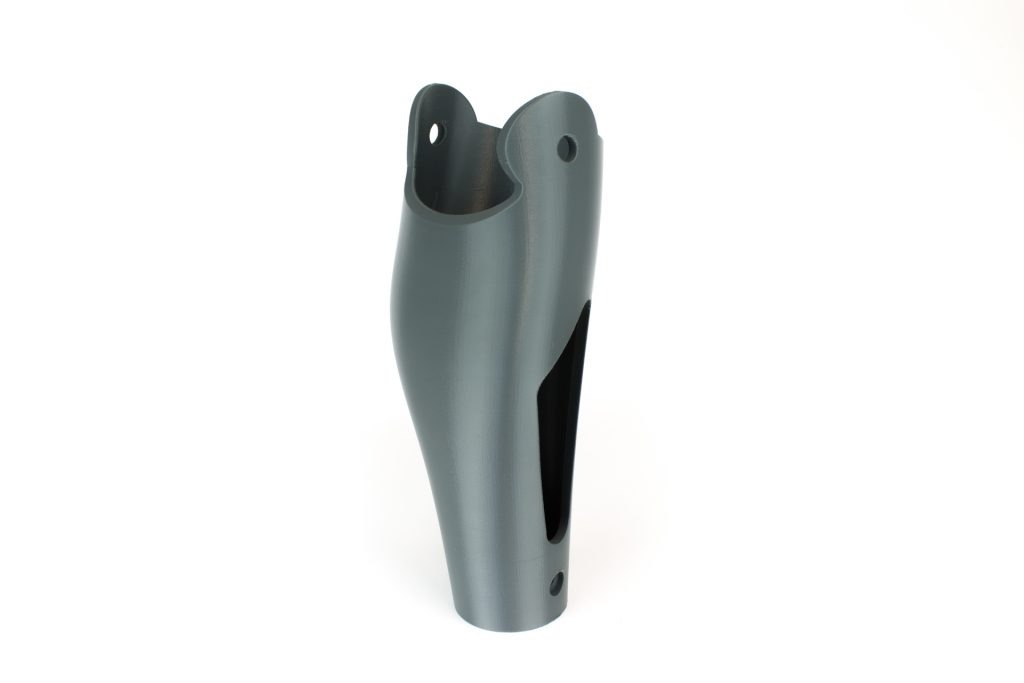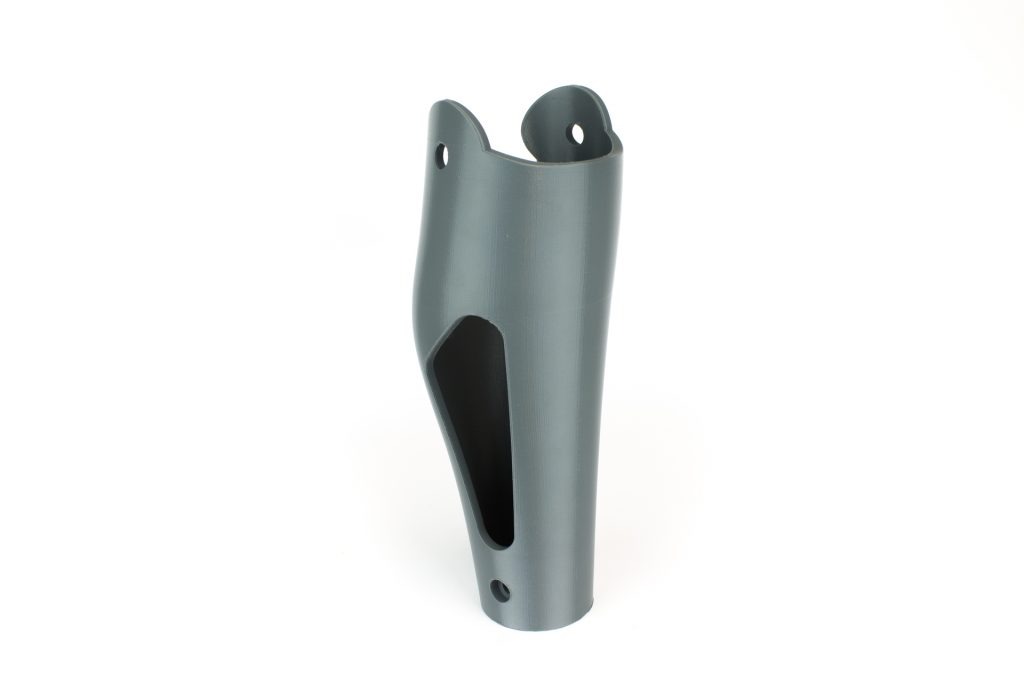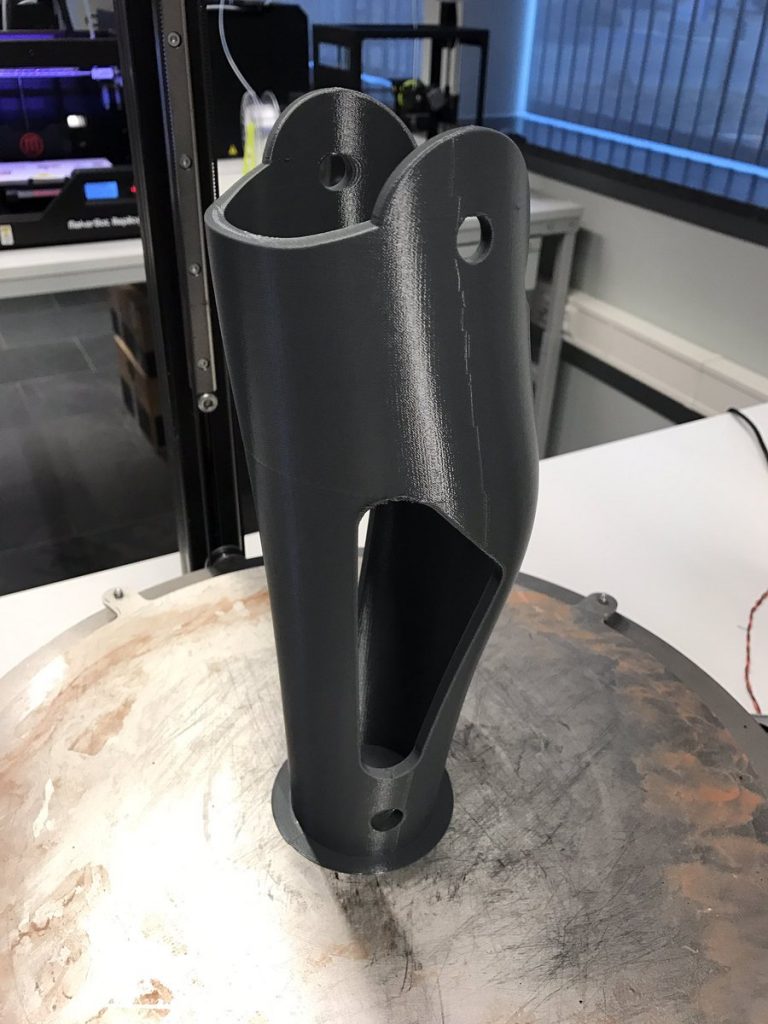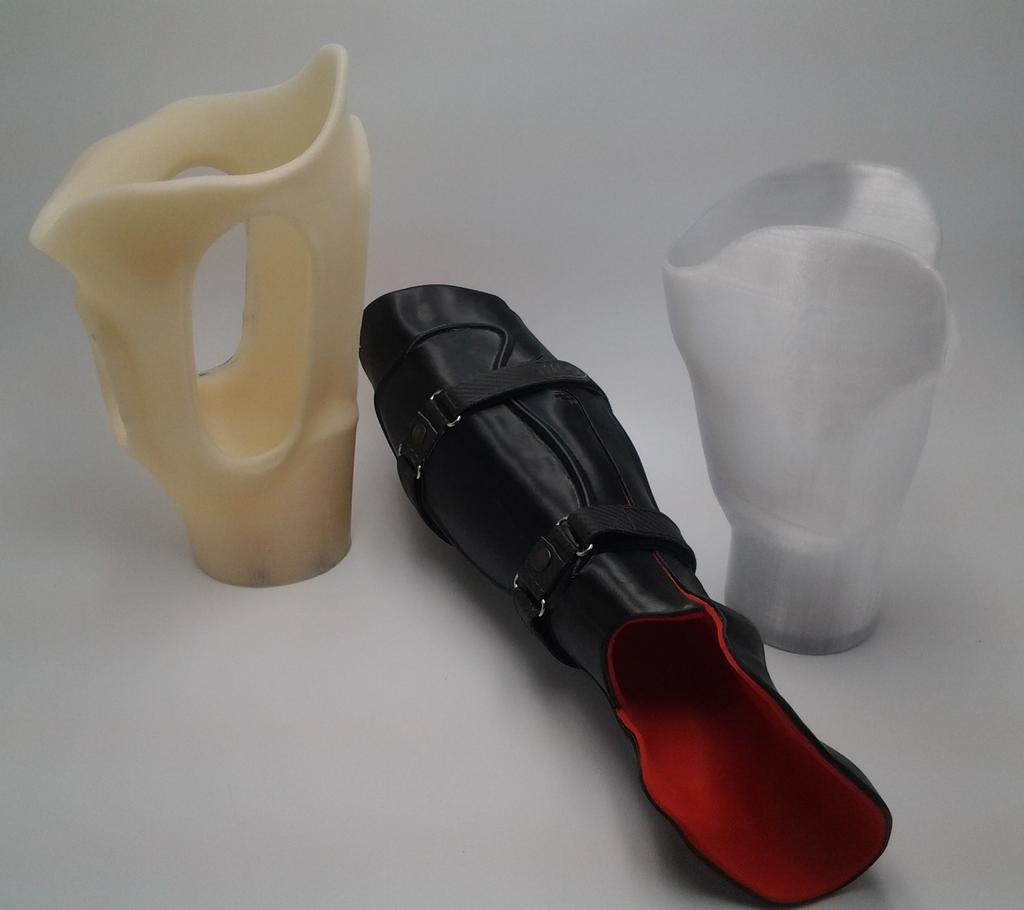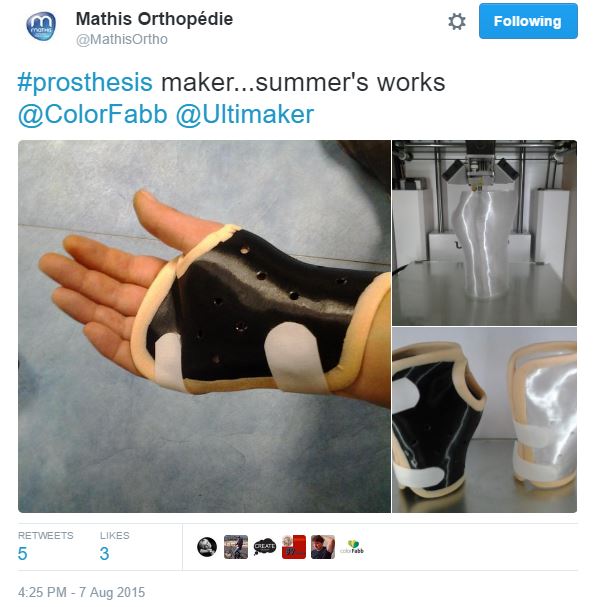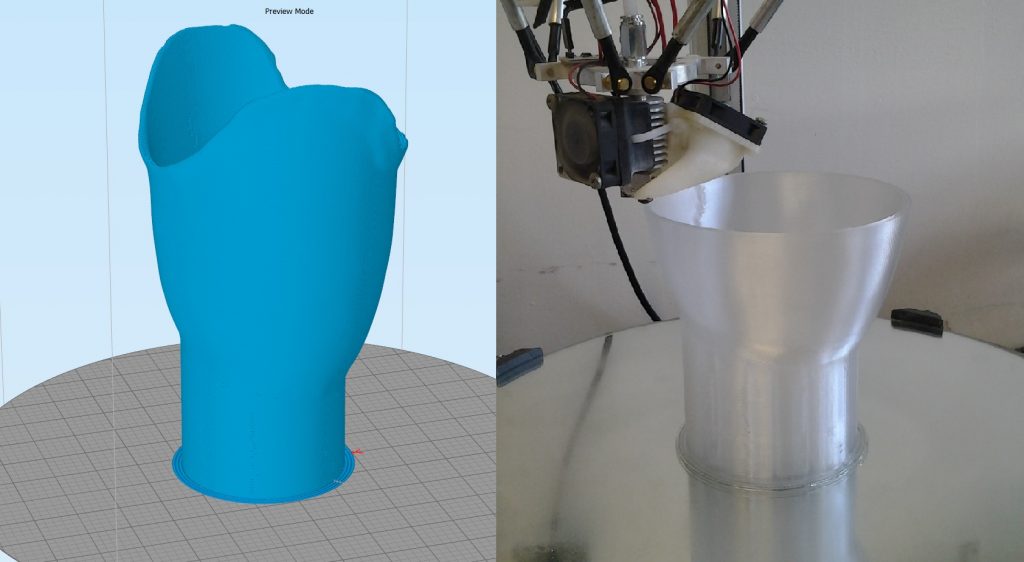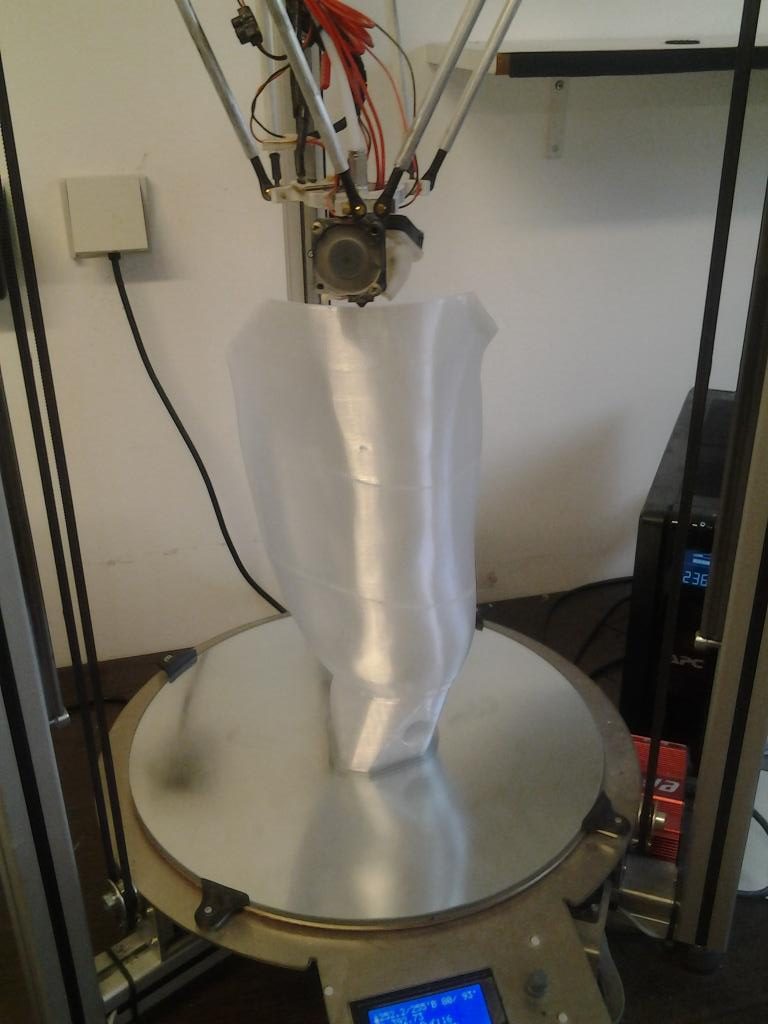3D printing is a technology that is perfectly suited for prosthetic and orthopedic designs. These applications require a high level of customization as well as complex shapes. We have seen this with companies like Mathis Orthopédie and organisations like Enable and 3D Life Prints.
To understand the needs and the challenges ourselves we have chosen to print a design for a prosthetic leg ourselves, using colorFabb_XT Dark Gray.
Design: https://grabcad.com/library/prosthetic-leg
This part was printed on a Swiss made Delta Tower with 0.15mm layer height. The design was altered slightly for better printing.
Please note that this model and print are made as a case study and not intended to be used in real life with a body’s weight supporting it. As you can see in the original design, the part we printed is meant to be the outer shell.
For this purpose colorFabb_XT is an excellent material.
colorFabb_XT is made with Eastman Amphora™ 3D polymer AM1800. Launched in September 2014, it is a fantastic functional engineering material. With colorFabb_XT we achieved to produce a filament that provides good strength and toughness, as well as certain FDA food contact compliances. It has found a wide audience amongst users looking for extra functionality. With a temperature resistance of 75+ degrees, this filament offers high strength and very high toughness, odor neutral processing, a styrene free formulation, FDA food contact compliance and BPA (Bisphenol A ) free formulation.
colorFabb_XT was our first co-polyester based filament. Our portfolio of co-polyester based filaments, made with Eastman Amphora polymers, has since extended with the all-round nGen, the high temperature resistant colorFabb_HT and semi-flexible nGen_FLEX. You can find more about what co-polyesters are by clicking here.
colorFabb is available in our webshop and through our worldwide network of distributors and resellers.
Keep checking out this site for the latest news regarding colorFabb news, tutorials and the latest prints from our print lab!
